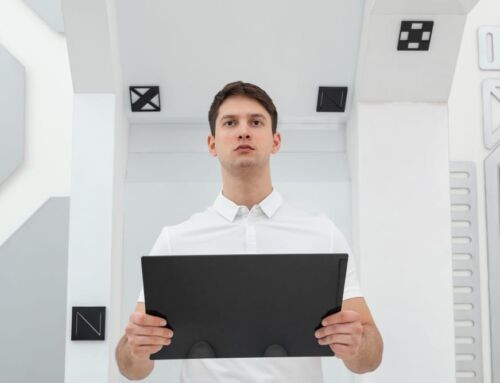What do you think is keeping your employees from becoming digital nomads? After all, the telecommuting and freelance economy is growing faster than ever, with half of the American workforce expected to be self-employed by 2020. Most of the people joining in this trend have left stiff, corporate jobs, where they felt trapped, overworked, demotivated and unappreciated. But what if the employee experience would acquiesce to some of the basic principles of the digital nomad trend, and embrace job meaningfulness, flexible working, collaborative environments and idea generation?
Creating an employee experience that can foster engagement, job satisfaction and productivity should be a main goal for every business regardless of the industry, as it focuses on a core human need – the need to create value through our work and utilize our potential.
Applying design thinking in HR
That’s actually not as outlandish as it may sound at first. In fact, HR practitioners can learn a lot from the principles of design thinking.
The movement that started a decade ago continues to revolutionize business practices, making a strong case for human-centered innovation. The two popular bestsellers Change by Design: How Design Thinking Transforms Organizations and Inspires Innovation by Tim Brown, CEO of design firm IDEO in Palo Alto and The Design of Business: Why Design Thinking is the Next Competitive Advantage by Roger Martin, dean of the Rotman School of Management in Toronto, talk about using design thinking to improve user experiences, develop new products or services, revamp corporate strategies, disturb or reinvent industries.
If you look at your current HR processes with a critical eye, how many of these processes are truly necessary? How many of them are efficient? How are they shaping the employee experience?
Design thinking can help you keep only relevant processes and organize them to work together to provide employees with a seamless experience that brings real value to both the employee and to the organization.
What if you applied this way of thinking to every step of the employee experience journey?
Key steps to mapping the employee experience
Step 1: Create a persona and empathize with them
Who is your end-user? The persona, the ideal employee, is a construction that helps you understand who you want to attract and how that person thinks and feels. It will tell you where to find them, how to talk to them, what to offer them and how to build a relationship with them.
Step 2: Define their needs and wants
Research their needs and their objectives like you would any potential customer. Go deep into their lives and find out what makes them feel valued, what challenges them, what their passions and fears are, what they do to overcome them and who they rely on to make decisions.
Step 3: Ideate
Brainstorm ideas for every stage of the employee experience – get creative with your solutions.
Gather 3-5 employees that are engaged, and run a small internal workshop together. Explain why it is important and what you want to achieve.
Step 4: Build a prototype program
Build a representation of one or more of these ideas to show to others and check if they work. Select a department that is willing to put in the time in implementing the program and work together to see how this changes the employee experience. Ask them to record their thoughts and conclusions and use that as input and lessons learned for a larger rollout.
Step 5: Test
Test your ideas and get feedback from your existing employees. Start implementing changes one at a time and work out a simple feedback system, together with them. Explain to everyone how the process works and what the goals are.
Engaging employees throughout every step of their experience
Employee engagement is associated with day-to-day working of existing employees that are in the middle of their experience. But engaging employees can be a strategic goal even before you recruit them.
The employee experience unfolds as follows:
- Employer branding
- Job listing
- Application process
- Interview & acceptance/rejection
- First day of work
- Onboarding
- Learning and development
- Career planning
- Team management
- Promotions
- Succession management
- Personal life events
- Job termination or retirement
Beginning with the employer branding and recruiting phase, you can analyze each stage of the employee experience through the employee engagement filter. You can, for example, convey your company values during the recruitment process. If an organization is saying it is innovative, that should be reflected in their recruitment message and actions. A company’s values should be aligned with the way people behave.
The application process is another essential step that is often overlooked as an engagement opportunity. By re-designing your applicant tracking system and online job submission processes from being employer-centric to being employee-centric can help create an engaging experience right from the start. This can, in turn, lead to a longer and better relationship with that future employee.
Every milestone of this employee journey can be designed in a way that it offers the advantages that a digital nomad life and work style would (job meaningfulness, flexible working, collaborative environments and idea generation), fostering engagement and retention.
If you’re interested in more practical ideas for mapping your employee experience so that it fosters long-term engagement and retention, download our latest white paper – Improving The Employee Experience Using People Analytics.
Download the white paper and see how you can create an integrated, engaging employee experience using people analytics!
Image via StockSnap under Creative Commons 0.0 license






Leave A Comment